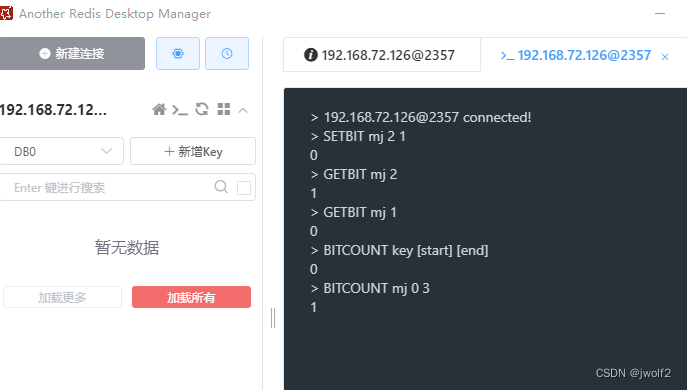Article directory
1. Redis command line operation bitmap

2. RedisTemplate operates bitmap
Common business scenarios of bitmap mainly include daily activity statistics (similar to monthly attendance), likes, BloomFilter, etc. Taking user mj's attendance statistics as an example, a user's check-in record for a month does not require 32bit (4byte) storage space, and the performance is also very good :
@Resource
private StringRedisTemplate template;
template.opsForValue().setBit("mj",1,true);
template.opsForValue().setBit("mj",2,true);
template.opsForValue().setBit("mj",30,true);
template.opsForValue().setBit("mj",31,true);
// 查看mj本月第三天是否打卡
Boolean ifArrive= template.opsForValue().getBit("mj", 3);
System.out.println(ifArrive);// false
// 统计本月打卡数
Long count = template.execute((RedisCallback<Long>) connection -> connection.bitCount("mj".getBytes(StandardCharsets.UTF_8), 1, 31));
System.out.println(count); // 4
3. Bitset in Java
Directly use Java's bitset to implement attendance and clocking. The data set storage DB here needs to be converted, such as Bitset#toLongArray(), and then converted to json for storage.
public static void main(String[] args) {
// Key一般为userId
Map<String,BitSet> map=new HashMap(1024);
BitSet set = map.getOrDefault("mj",new BitSet(32));
set.set(1,true);
set.set(2,true);
set.set(30,true);
set.set(31,true);
System.out.println(set.get(3)); // 本月第三天打卡:false
System.out.println(set.cardinality());// 本地打卡数:4
}